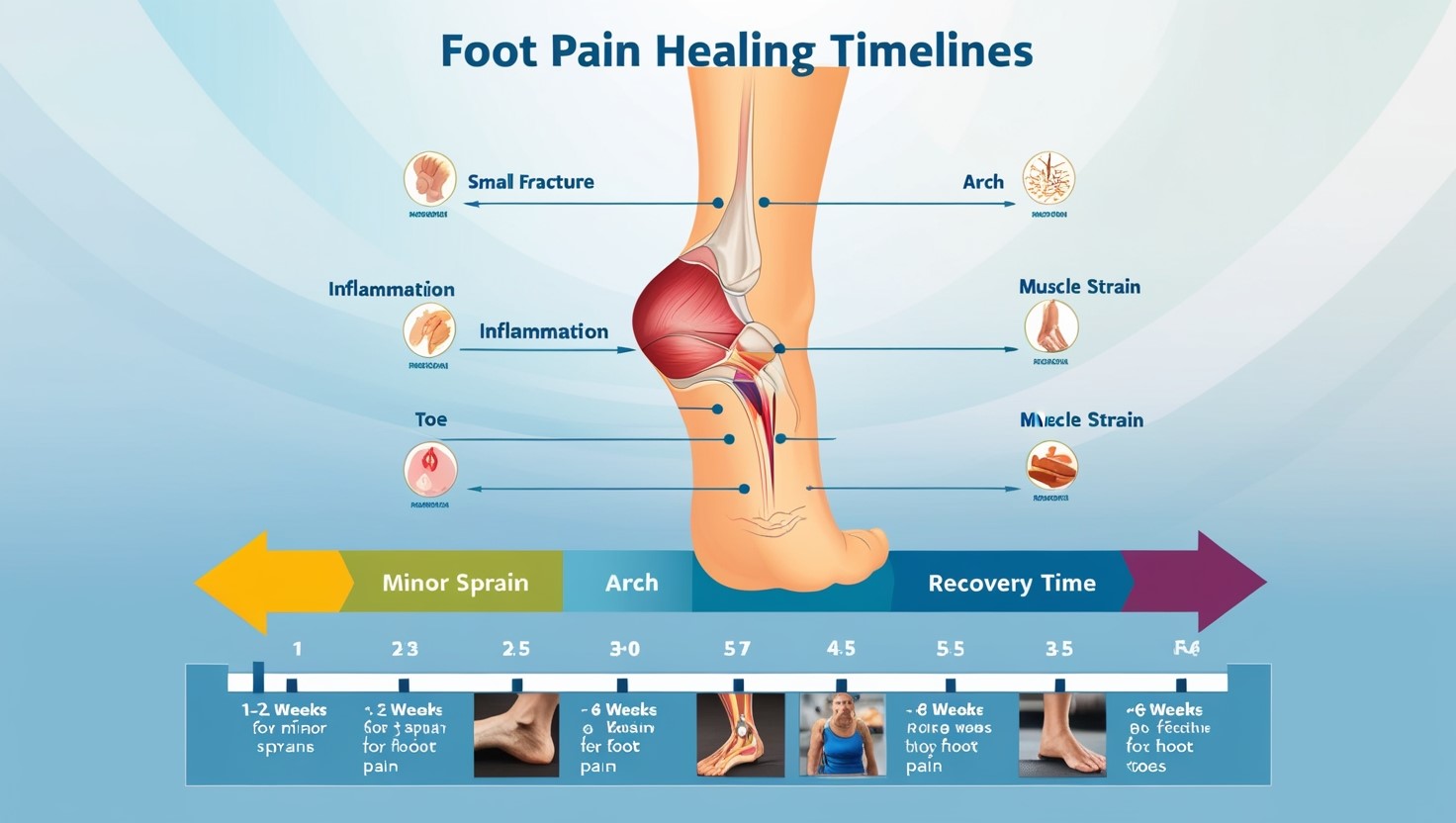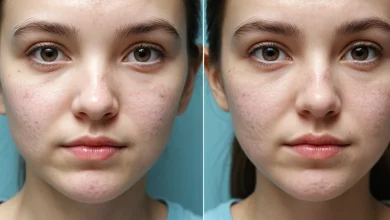How to Get Rid of a Toe Infection: What Causes It and Which Treatments Work Best?
How to Get Rid of a Toe Infection: What Causes It and Which Treatments Work Best?

Toe infections can be a painful and frustrating condition that disrupts your daily routine, causing discomfort with every step. Whether you’re dealing with a mild infection or something more serious, understanding the causes and learning about the best treatments can help you get back on your feet quickly and safely. In this blog post, we’ll explore the various causes of toe infections, the most effective treatments, and some preventive measures to ensure your toes stay healthy.
1. Understanding Toe Infections
A toe infection occurs when bacteria, fungi, or viruses invade the skin or tissue around the toe. These infections can range from mild to severe and may affect the skin, nails, or deeper tissue. Common symptoms include redness, swelling, pain, and sometimes pus or drainage. While some infections can be treated at home, others may require medical intervention.
2. Common Causes of Toe Infections
Several factors can lead to a toe infection, and understanding them can help in preventing future issues. Here are the most common causes:
a. Ingrown Toenails
One of the leading causes of toe infections is an ingrown toenail. This happens when the edge of the nail grows into the surrounding skin, causing irritation, redness, and sometimes infection. If not treated early, it can worsen, leading to a bacterial infection.
b. Fungal Infections
Fungal infections, such as athlete’s foot or toenail fungus, are another major cause of toe infections. They thrive in warm, moist environments, like sweaty shoes, and can spread easily from person to person. Symptoms include thickened, discolored nails, peeling skin, and itching.
c. Cuts, Blisters, or Injuries
Minor cuts, blisters, or injuries on the toe can create an opening for bacteria to enter and cause an infection. Wearing tight shoes or improperly fitted footwear can lead to friction, which may result in blisters that can become infected.
d. Poor Foot Hygiene
Not keeping your feet clean can lead to infections. Failing to wash and dry your feet properly can encourage the growth of bacteria and fungi, leading to conditions like athlete’s foot or bacterial infections.
e. Diabetes and Circulatory Problems
People with diabetes or poor circulation are more prone to toe infections because of reduced blood flow to the extremities. Infections may take longer to heal, and wounds can become more severe if not addressed promptly.
3. Symptoms of a Toe Infection
Knowing the symptoms of a toe infection can help you catch the condition early and seek appropriate treatment. Here are some common signs to watch for:
- Redness around the affected area
- Swelling or puffiness
- Pain or tenderness, especially when pressure is applied
- Pus or drainage
- Foul odor (in the case of bacterial infections)
- Warmth in the infected area
- Thickened or discolored toenails (in fungal infections)
If you notice any of these symptoms, it’s important to take action quickly. Left untreated, a mild infection can escalate, leading to more serious complications.
4. How to Get Rid of a Toe Infection
Now that you understand what causes toe infections, let’s focus on how to treat them effectively. The type of treatment you’ll need depends on the cause of the infection.
a. Treating Ingrown Toenails
For mild ingrown toenails, soaking the affected foot in warm water can help reduce inflammation. You can also gently lift the edge of the nail and place a small piece of cotton under it to prevent further irritation. Over-the-counter pain relievers can help with discomfort, but if the infection persists or worsens, it’s important to see a doctor. In severe cases, partial or full nail removal may be required.
b. Over-the-Counter Antifungal Treatments
If your infection is fungal, such as athlete’s foot or toenail fungus, over-the-counter antifungal creams, powders, or sprays can be effective. These treatments are readily available and can help clear up the infection within a few weeks. Be consistent with your application and follow the product’s instructions carefully.
c. Prescription Medications for Severe Infections
For more stubborn fungal infections, you may need to visit a healthcare provider for prescription antifungal medication. Oral antifungals are stronger and may be necessary if topical treatments don’t work. Your doctor may also prescribe antibiotics if the infection is bacterial.
d. Proper Foot Care and Hygiene
One of the simplest and most effective treatments for preventing and curing minor infections is maintaining proper foot hygiene. Clean your feet daily with soap and water, dry them thoroughly (especially between the toes), and apply an antifungal powder or spray if needed. Also, make sure to wear breathable shoes and moisture-wicking socks to prevent fungal growth.
e. Soaking Your Feet
Soaking your feet in warm water with Epsom salts can help reduce inflammation, soothe the skin, and promote healing for minor infections. You can do this for 15-20 minutes once or twice a day. Adding a few drops of tea tree oil to the soak can also provide antifungal benefits.
f. When to See a Doctor
If home treatments don’t improve the condition after a few days, or if the infection worsens, it’s important to consult a doctor. Severe infections can spread to other parts of the body, so early intervention is crucial. If you have diabetes or other underlying health conditions, seek medical attention immediately if you notice signs of infection.
5. Preventing Toe Infections
Prevention is always better than cure, and fortunately, there are several simple steps you can take to avoid toe infections in the future.
a. Trim Your Nails Properly
Cut your toenails straight across and avoid rounding the edges. This can prevent ingrown toenails, which are a common source of infections. Make sure not to cut your nails too short, as this can also lead to problems.
b. Wear Proper Footwear
Choose shoes that fit properly and provide enough room for your toes. Tight shoes can cause blisters and increase the risk of fungal infections by trapping moisture. Opt for breathable materials like leather or mesh that allow air circulation.
c. Keep Your Feet Dry
Fungi thrive in damp environments, so keeping your feet dry is essential. Change your socks regularly, especially if they become sweaty, and opt for moisture-wicking fabrics. After showering, dry your feet thoroughly, paying special attention to the spaces between your toes.
d. Avoid Walking Barefoot in Public Areas
Public showers, locker rooms, and swimming pools are breeding grounds for fungi. Always wear sandals or shower shoes to protect your feet from coming into contact with infected surfaces.
e. Don’t Share Footwear or Nail Tools
Sharing shoes, socks, or nail tools can spread infections. Make sure to use your own and keep them clean to prevent the transmission of bacteria or fungi.
6. The Importance of Early Treatment
When it comes to how to get rid of a toe infection, early intervention is key. Ignoring the symptoms or delaying treatment can lead to complications, especially for individuals with compromised immune systems or underlying health conditions. By taking quick action and following a proper treatment plan, you can stop the infection from spreading and heal faster.
Conclusion
Toe infections can be painful and inconvenient, but with the right treatment and preventive measures, you can heal quickly and avoid future problems. Whether the cause is an ingrown toenail, fungal infection, or injury, knowing how to get rid of a toe infection is essential for keeping your feet healthy. By maintaining good foot hygiene, wearing proper footwear, and seeking medical advice when necessary, you can keep your toes infection-free and enjoy pain-free movement.




